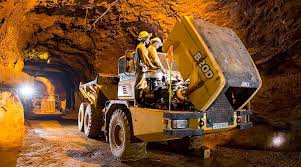
John Cassim
Low water levels at the Cahora Bassa Hydroelectric Plant (HCB) due to ongoing drought are raising concerns about continued power shortages in Mozambique, potentially impacting mining operations in the Democratic Republic of Congo (DRC).
Cahora Bassa, a major regional energy supplier, is struggling with low reservoir levels, significantly affecting electricity exports to countries like Zambia, which in turn supplies power to the DRC.
Despite the onset of the rainy season, there’s no guarantee of sufficient reservoir recovery to ensure a stable energy supply throughout the year. This has already impacted electricity supply to the DRC, jeopardizing copper production at the Kamoa-Kakula mining complex, operated by Ivanhoe Mines.
According to Engineering News, the Canadian company has warned that reduced energy capacity could hinder its 2025 production targets, estimated between 520,000 and 580,000 tonnes of copper.
To mitigate the energy crisis, Ivanhoe Mines is exploring alternative energy sources, including importing power from Angola. The company has also increased its copper reserves to buffer potential production disruptions.
In addition to the energy supply constraints, Ivanhoe faces other challenges, including a fire that damaged an emergency generator at the mining complex, potentially delaying smelter startup by up to three months. These factors further complicate the company’s ability to achieve its 2025 production goals.
The recovery of Mozambique’s hydroelectric capacity is crucial for the region’s energy stability and the competitiveness of the DRC’s mining industry. Continued reliance on alternative energy sources could significantly increase operating costs, potentially impacting the viability of large industrial and mining projects dependent on Mozambican power.
